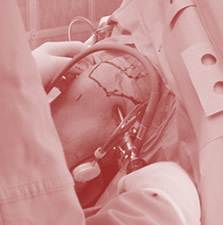New Research: Failure in 6 out of 10 Surgical Repairs of the Shoulder Rotator Cuff
Last week at the American Academy of Orthopedic Surgeons meeting research was presented which demonstrated that large rotator cuff repairs that were repaired surgically retore at a rate of 57% in a series of 500 patients. The researchers demonstrated that the repairs with the largest tears were more likely to tear again. If the patients made it to 6 months after surgery without a retear, they did better than patients who didn’t have intact cuffs at that point. Is there a shoulder surgery alternative? We’ve argued for years that for smaller rotator cuff tears that are complete or partial, a injection with stem cells or other biologics may be the way to go, as the data on shoulder rotator cuff tears treated surgically isn’t that convincing. Why do we think these larger tears are retearing? Just sewing back the torn ends does nothing to address why the tear happened in the first place, i.e. the tissue quality was poor. This includes a reduction in the blood vessels that supply nutrition to the area as well as the quality of the raw materials-the collagen and muscle fibers. Based on our experience with many patients with torn rotator cuffs, we would recommend trying to fix torn rotator cuff muscles and tendons with stem cells through a needle where possible. When that’s not possible due to the size of the tear, we’d recommend that surgeons consider using stem cells with surgery to address tissue quality. The upshot? IMHO we need to focus more attention to how to improve the strength of the tissue, as sewing back together “tissue paper” is unlikely to be an effective strategy for patients.

NOTE: This blog post provides general information to help the reader better understand regenerative medicine, musculoskeletal health, and related subjects. All content provided in this blog, website, or any linked materials, including text, graphics, images, patient profiles, outcomes, and information, are not intended and should not be considered or used as a substitute for medical advice, diagnosis, or treatment. Please always consult with a professional and certified healthcare provider to discuss if a treatment is right for you.

